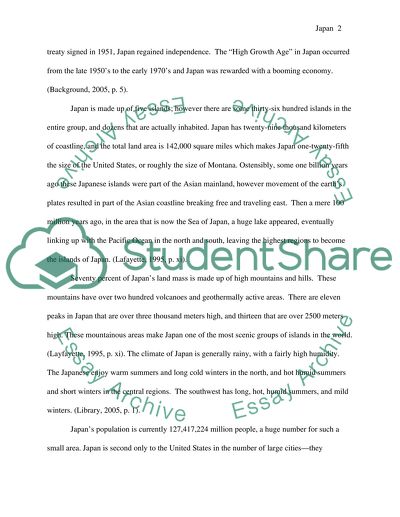Cite this document
(“The history and culture of Japan Essay Example | Topics and Well Written Essays - 2250 words”, n.d.)
The history and culture of Japan Essay Example | Topics and Well Written Essays - 2250 words. Retrieved from https://studentshare.org/history/1531679-the-history-and-culture-of-japan
The history and culture of Japan Essay Example | Topics and Well Written Essays - 2250 words. Retrieved from https://studentshare.org/history/1531679-the-history-and-culture-of-japan
(The History and Culture of Japan Essay Example | Topics and Well Written Essays - 2250 Words)
The History and Culture of Japan Essay Example | Topics and Well Written Essays - 2250 Words. https://studentshare.org/history/1531679-the-history-and-culture-of-japan.
The History and Culture of Japan Essay Example | Topics and Well Written Essays - 2250 Words. https://studentshare.org/history/1531679-the-history-and-culture-of-japan.
“The History and Culture of Japan Essay Example | Topics and Well Written Essays - 2250 Words”, n.d. https://studentshare.org/history/1531679-the-history-and-culture-of-japan.


